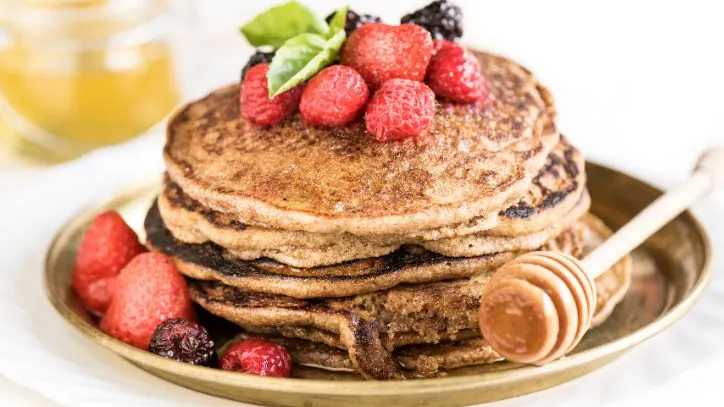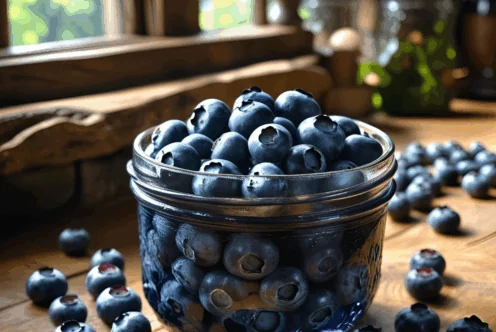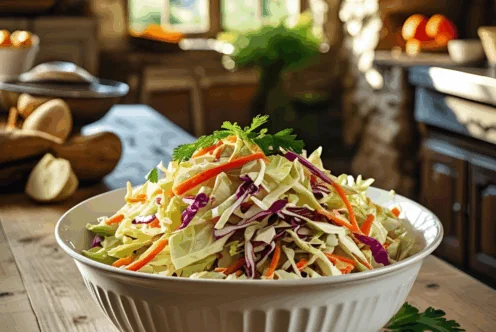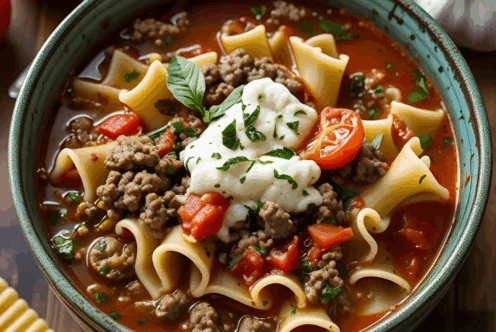Blog
Buckwheat – A Nutritious Gluten Free Food!

For a long time now, both my mom and I have been gluten intolerant, which means we’ve had to eliminate anything made with wheat or other gluten-containing grains from our diets. At first, this posed quite a challenge. We had to learn what substitutes we could use for wheat flour in various recipes and figure out how to cook with those different alternatives. One fascinating aspect of this journey was discovering the numerous gluten-free grains available that are not as widely known as others. One such grain, or rather pseudocereal, is buckwheat.
So, if buckwheat isn’t grain or wheat, what exactly is it? According to registered dietitian Amy Fischer M.S., R.D., C.D.N., buckwheat is categorized as a pseudocereal. This means it is a plant that produces a starchy seed used similarly to cereals or rice. It can be utilized to create a variety of products, such as flour, noodles, tea, honey, and granola, making it a versatile ingredient in our gluten-free cooking and baking.
Nutritional Profile of Buckwheat
Nutritionally, buckwheat is a powerhouse. It predominantly consists of carbohydrates, yet it also has a higher protein content compared to regular wheat and rice. Notably, buckwheat is a complete protein, meaning it contains all nine essential amino acids our bodies cannot produce on their own. This makes it an excellent option for vegetarians and vegans who need to ensure they’re getting adequate protein.
Beyond protein, buckwheat is also an excellent source of dietary fiber. This fiber not only aids in digestion but also acts as a prebiotic, promoting the growth of beneficial gut bacteria. Studies have shown that a diet rich in fiber can improve gut health and enhance overall well-being. Research supports the idea that whole grains, including buckwheat, contribute to lower incidences of chronic diseases, such as heart disease and diabetes.
Furthermore, buckwheat is packed with antioxidants, which play a vital role in protecting our bodies from oxidative stress and inflammation. Key nutrients found in buckwheat include:
- Manganese: Essential for bone health, wound healing, and metabolism.
- Magnesium: A crucial mineral for many biochemical processes, including muscle contraction and nerve transmission.
- Iron: Important for creating red blood cells and transporting oxygen throughout the body.
- Copper: Plays a vital role in forming red blood cells and maintaining proper immune function.
- Phosphorous: Important for bone health and energy production.
Incorporating buckwheat into your diet offers not only a gluten-free grain option but also a nutrient-dense addition that can elevate the overall quality of your meals.
Cooking with Buckwheat
Learning how to cook with buckwheat can be incredibly rewarding. It is available in several forms, including whole groats, flour, and noodles (often called soba noodles in Japanese cuisine). Each form has unique culinary applications, making buckwheat a versatile ingredient.
Whole Buckwheat Groats
Whole buckwheat groats can be cooked similarly to rice or quinoa. Rinse the groats under cold water to remove any debris, then simmer them in water or broth for about 15-20 minutes, or until tender. They can serve as a hearty base for salads, grain bowls, or as a side dish. You can also add sautéed vegetables, herbs, and spices for more flavor.
For breakfast, consider making Buckwheat Breakfast Bowls. Cooked groats serve as a base, and you can top them with yogurt, fresh fruit, nuts, and a drizzle of honey for a nutritious start to your day. This recipe from Babaganosh showcases how to create a delicious and filling breakfast bowl.

Buckwheat Flour
Buckwheat flour is another versatile option. It’s an excellent alternative to traditional flour in various baked goods. You can use it to create pancakes, muffins, and bread. For instance, Love and Lemons features a fantastic Buckwheat Pancakes Recipe that is naturally gluten-free and packed with flavor.
When substituting buckwheat flour in recipes, it’s essential to note that it doesn’t act the same way as wheat flour due to the absence of gluten. To improve the texture of baked goods, consider mixing buckwheat flour with other gluten-free flours, such as almond flour or tapioca flour.
Buckwheat Noodles
Buckwheat is also popular in Asian cuisine, particularly in the form of soba noodles. These noodles can be used in stir-fries, salads, or served in soups. They have a distinct nutty flavor and a unique texture that adds depth to various dishes. Make sure to check packaging, as some soba noodles contain wheat flour, so look for 100% buckwheat varieties.
A delightful way to enjoy buckwheat noodles is in a Hearty Mediterranean Salad. The Food Blog provides a recipe that incorporates fresh vegetables, olives, and a tangy dressing, making it a refreshing meal or side dish.
Health Benefits of Buckwheat
In addition to its tasty qualities, buckwheat offers several health benefits that are worth noting:
- Heart Health: Buckwheat’s high levels of antioxidants, particularly rutin, have been linked to improved heart health. Rutin helps lower blood pressure and cholesterol levels. Studies suggest that diets rich in buckwheat may help reduce the risk of heart disease.
- Blood Sugar Control: Buckwheat has a low glycemic index, meaning it doesn’t cause a rapid spike in blood sugar levels. This makes it an excellent choice for individuals with diabetes or those looking to stabilize their blood sugar. Research indicates that including buckwheat in meals may improve glycemic control, offering significant benefits for metabolic health.
- Weight Management: As a high-fiber food, buckwheat can help you feel fuller for longer, potentially aiding in weight management. Foods rich in fiber tend to promote satiety and reduce overall calorie intake.
- Digestive Health: The soluble fiber in buckwheat aids digestion by promoting healthy bowel movements and preventing constipation. Incorporating fiber-rich foods like buckwheat into your daily diet can support a healthy digestive system.
Buckwheat in Traditional and Modern Cuisine
Buckwheat has a long history of use in various cuisines around the world. It is especially prevalent in Eastern European and Asian dishes. In Russia, buckwheat porridge, known as “kasha,” is a traditional meal. Buckwheat is also a staple in Japanese cuisine, where soba noodles are beloved for their unique flavor and health benefits.
In modern culinary trends, buckwheat is gaining popularity among health-conscious individuals, gluten-free eaters, and those looking for alternative grains. As the demand for gluten-free products rises, more people are recognizing the benefits of less common grains like buckwheat.
How to Incorporate Buckwheat into Your Diet
If you’re looking to add buckwheat to your meals, here are some tips:
- Start Simple: Incorporate buckwheat into your existing meals. For example, add cooked buckwheat groats to salads, soups, and stir-fries for added texture and nutrition.
- Experiment with Baking: Try baking with buckwheat flour. You can start with pancakes or muffins, or explore substituting a portion of the flour in your favorite recipes.
- Make Snacks: Use buckwheat to create nutritious snacks. Roast buckwheat groats to make a crunchy topping for salads or yogurt. You can also make buckwheat granola for breakfast or snacking.
- Explore Global Recipes: Search for recipes from different cultures that utilize buckwheat. Trying new dishes can make the or experience of cooking with buckwheat even more exciting.
Delicious Buckwheat Recipes to Try
If you’re inspired to try buckwheat in your cooking, consider these delicious recipes:
- Soft Buckwheat Bread: This recipe from Healthy Taste Of Life creates a soft, gluten-free bread that’s perfect for sandwiches or toast.
- Buckwheat Salad with Roasted Vegetables: A vibrant salad featuring roasted seasonal vegetables mixed with cooked buckwheat makes for a filling meal. Adding a creamy dressing can enhance the flavors.
- Buckwheat Porridge: A warm bowl of buckwheat porridge topped with fruits, nuts, and spices makes for a comforting breakfast option.
Conclusion
Whether or not you need to avoid gluten, buckwheat is a nutritious and delicious food worth exploring. Packed with protein, fiber, and antioxidants, it is a versatile ingredient that can enhance a wide variety of dishes. Embracing buckwheat not only diversifies your diet but also contributes to overall health and well-being.
With so many different ways to use buckwheat, from savory meals to sweet treats, you’re sure to find a favorite recipe or two. So go ahead, give buckwheat a try; it might just become a staple in your kitchen too!
For more health-related articles and information about gluten-free living, check out the Fill Your Plate blog.
Embracing buckwheat can lead to a healthier lifestyle while enjoying diverse and delicious meals. Don’t miss out on the opportunity to experience this unique and beneficial pseudocereal!
By Heide Kennedy, Arizona Farm Bureau Communications Intern


















